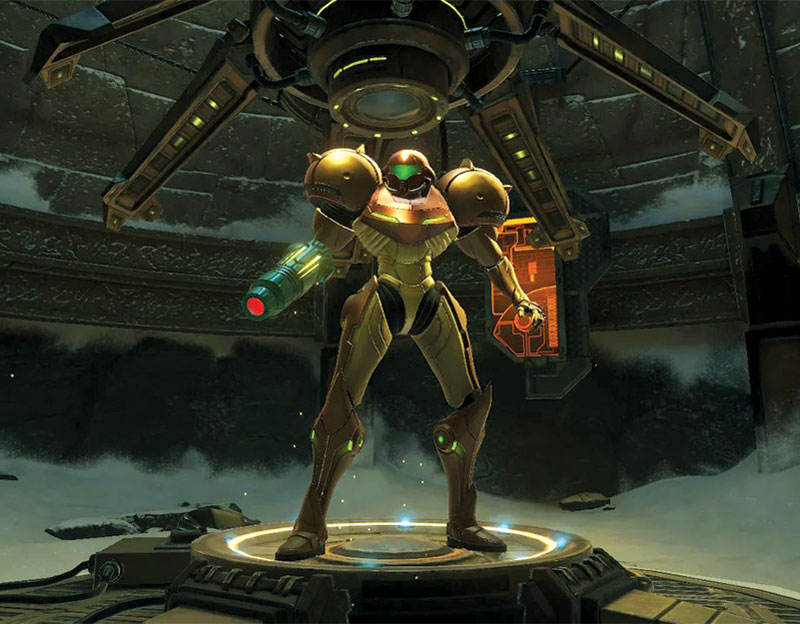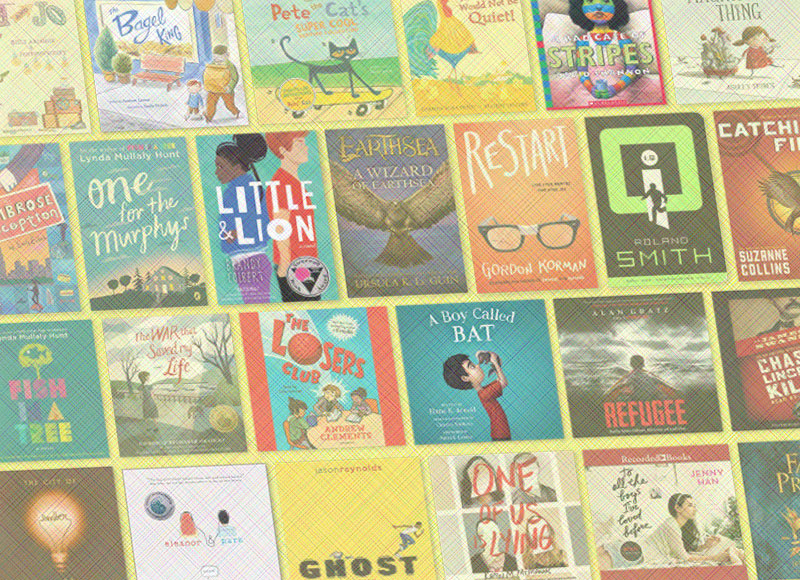Review of the Day: Born to Be Giants by Lita Judge
 Born to Be Giants: How Baby Dinosaurs Grew to Rule the World
Born to Be Giants: How Baby Dinosaurs Grew to Rule the World
By Lita Judge
Flash Point / Roaring Brook (an imprint of Macmillan)
$17.99
ISBN: 978-1-59643-443-1
Ages 5 and up
On shelves now.
Just yesterday I had a very nice children’s author from North Carolina visiting me in my library. She wanted to look at my room’s collection of dinosaur books for kids, so we pulled over some chairs and took a look. After flipping through about fifteen titles, she turned to me and asked point blank, "Is there an author that specializes in writing about dinosaurs for kids?" I was stumped. Generally speaking, authors sometimes treat dinosaurs as the topic that’s going to get them a lot of money, but they aren’t a topic that the writer is going to be all that interested in personally. I’ve seen very few write more than one book on the topic. Of course, if anybody is going to write more than one non-fiction dino book, I know of a candidate. She’s only written a couple books so far, and Born to Be Giants: How Baby Dinosaurs Grew to Rule the World is her first about those terrible lizards. Still, considering her background, her knowledge, and her skills with a paintbrush, I’m going to harbor a guess that Born to Be Giants wasn’t some last minute oh-I-should-write-a-dinosaur-book thought and it probably won’t be her last. Ms. Judge has clearly had this book in mind for a while. You might even say she’s been preparing for it since she was 15.
ADVERTISEMENT
ADVERTISEMENT
 Dinosaurs laid eggs to create other dinosaurs. No one disputes that fact. So exactly how does a creature that weighs as much as 17 elephants care for a baby only just a bit larger than its toes? What dangers do such babies face? How could they survive? Were there dinosaurs that tended to their young? How did they keep them warm? Fed? Safe? With gorgeous watercolor renderings, author/illustrator Lita Judge sets out to answer these questions, and to educate not just kids who may not know these facts, but the adult gate-keepers as well.
Dinosaurs laid eggs to create other dinosaurs. No one disputes that fact. So exactly how does a creature that weighs as much as 17 elephants care for a baby only just a bit larger than its toes? What dangers do such babies face? How could they survive? Were there dinosaurs that tended to their young? How did they keep them warm? Fed? Safe? With gorgeous watercolor renderings, author/illustrator Lita Judge sets out to answer these questions, and to educate not just kids who may not know these facts, but the adult gate-keepers as well.
As a children’s librarian I am constantly amazed by how much additional information has been discovered on a given topic since I was a child. As a kid, I knew my basic dinosaurs. The Stegosaurus. The T-Rex. The now defunct Brontosaurus who went the way of Pluto. Ms. Judge highlights only eight dinosaurs that fit her topic, but with the exception of Tyrannosaurus Rex, each and every one of them was new to me. Psittacosaurus? Maiasura? Thank heavens for the pronunciation guide in the back. I can well imagine parents all over the country picking up this book to read to their small dinosaur enthusiasts, only to find themselves stumbling over the proper pronunciation of the Troodon (it’s TRUE-o-don, in case you’re curious). I think that’s one of the things I liked best about this book too. The fact that as an adult, I found myself learning just as much as the kids would. Heck, I’ve just learned new words like "altricial" and "precocial" as a kind of bonus. After all these years, it’s fun to feel like a kid again.
 A little background on Ms. Judge. The back of this book is chock full of great additional information. There’s a Glossary, a Bibliography (no websites, which is a bit of a gap), and an Author’s Note. In this note, Judge discusses the fact that when she was 15 she talked her way onto a dinosaur dig from the Royal Tyrrell Museum of Paleontology. She did this for three summers, and that’s not all! Ms. Judge’s grandparents were also ornithologists. Appropriate considering current dinosaur-into-bird theories out there. The point is, she knows from whence she speaks. I can’t think of any other author/illustrators out there for kids who have participated on dino digs but also write for kids on a variety of different topics.
A little background on Ms. Judge. The back of this book is chock full of great additional information. There’s a Glossary, a Bibliography (no websites, which is a bit of a gap), and an Author’s Note. In this note, Judge discusses the fact that when she was 15 she talked her way onto a dinosaur dig from the Royal Tyrrell Museum of Paleontology. She did this for three summers, and that’s not all! Ms. Judge’s grandparents were also ornithologists. Appropriate considering current dinosaur-into-bird theories out there. The point is, she knows from whence she speaks. I can’t think of any other author/illustrators out there for kids who have participated on dino digs but also write for kids on a variety of different topics.
The structure of the book is particularly well put together. Ms. Judge doesn’t just talk about what this or that dinosaur might have done with its young. She compares and contrasts extinct creatures and tendencies with contemporary animals we’re familiar with. A T-Rex’s nesting techniques is compared to that of a bush turkey. Play fighting between Troodons is comparable to play fighting between wolf pups. And each time this kind of a comparison is made, Judge is careful to include an illustration of the still existing creatures/objects. I particularly liked the small trombone player seen in the distance behind a Hypacrosaurus, giving a warning call. Even the end of the book gives a sense of scale when it shows a small fedora wearing human figure beside each of the eight dinos mentioned in the book (though the one by the T-Rex is seen beating a swift retreat).
 Now I am familiar with Ms. Judge. I loved her work on Pennies for Elephants and her first book One Thousand Tracings: Healing the Wounds of World War II. So I’m feeling just a bit ashamed of myself when I admit that as I read through this book I found myself thinking, "Pretty pictures. I wonder who illustrated this?" Yeah. My bad. Judge is obviously on the top of her game here too. And with her background in dino knowledge I don’t even doubt the physical appearance of some of these creatures. When the Argentinosaurus sports ridges down its flesh or the beaky little Psittacosaurus has strange protrusions on the sides of its face, I believe it. Kids will too, I wager.
Now I am familiar with Ms. Judge. I loved her work on Pennies for Elephants and her first book One Thousand Tracings: Healing the Wounds of World War II. So I’m feeling just a bit ashamed of myself when I admit that as I read through this book I found myself thinking, "Pretty pictures. I wonder who illustrated this?" Yeah. My bad. Judge is obviously on the top of her game here too. And with her background in dino knowledge I don’t even doubt the physical appearance of some of these creatures. When the Argentinosaurus sports ridges down its flesh or the beaky little Psittacosaurus has strange protrusions on the sides of its face, I believe it. Kids will too, I wager.
One of the difficulties in writing a dino children’s book is finding a topic that hasn’t already been done to death. I don’t know my books in this field as well as I might, and so I could have gone on thinking that this was the only children’s title on the subject of dinosaur babies. However, in his Booklist review of this book, my boss pointed out that this title would make a for a good gateway book to more in-depth dino studies like Kathleen Zoehfeld’s Dinosaur Parents, Dinosaur Young: Uncovering the Mystery of Dinosaur Families. Of course, Zoehfeld’s book comes in at 64 pages for 9-12 year olds. Judge’s book, in contrast, is 48 pages and reads younger. For the kid who thinks they’ve seen it all, every dinosaur concept this side of the sun, Born to Be Giants offers something a little different for the average scaly-skinned enthusiast. Beautiful to look at, chock full of facts, and from a source you can trust, Lita Judge proved that in the world of dinos, there’s an author out there to watch.
On shelves now.
Source: Hardcover copy sent from publisher for review.
Professional Reviews: Publishers Weekly
Misc:
- All sort of goodies abound at Lita Judge’s website for this book. You can find coloring pages, photos from an actual dino dig, and fun sketches for the book. All of it is downloadable too.
- There’s also an article about Ms. Judge and her book in the Nashua Telegraph.
Filed under: Reviews
About Betsy Bird
Betsy Bird is currently the Collection Development Manager of the Evanston Public Library system and a former Materials Specialist for New York Public Library. She has served on Newbery, written for Horn Book, and has done other lovely little things that she'd love to tell you about but that she's sure you'd find more interesting to hear of in person. Her opinions are her own and do not reflect those of EPL, SLJ, or any of the other acronyms you might be able to name. Follow her on Twitter: @fuseeight.
ADVERTISEMENT
ADVERTISEMENT
SLJ Blog Network
One Star Review, Guess Who? (#202)
Exclusive: Giant Magical Otters Invade New Hex Vet Graphic Novel | News
Parsing Religion in Public Schools
Take Five: LGBTQIA+ Middle Grade Novels
ADVERTISEMENT








Just learned a few years ago that all songbirds are altricial. Thought you’d want to know.
That sounds awesome! Now I’m going to have to go get a copy before I drag my 5-year-old to see the dinosaur baby exhibit at the Royal Ontario Museum. Fantastic timing!
Who was the North Carolina author?
I’m not really sure. We were looking for dinosaur books where you could find clear overlays that showed the bones and then how the skin and muscles would lay over the bones. It was a good idea, but I just couldn’t locate any books like that. I mean there MUST be some somewhere that do that, but I was stumped! In the end she just said, “Guess I’ll have to write one myself,” and that was that. Never caught her name, though.
Have a naturalist write about and illustrate dinosaurs? What a concept. Wonderful review, Betsy. Besides dinosaurs that are just scary and just cute enough, I agree this book gives a sense of how so much of science changes from the time kids turn to grownups: it’s not just facts.
Too bad about the author’s name. Always glad to hear when a fellow Tarheel gets up to the big NYC.
THE author on dinos for kids is Doug Dixon. I don’t know how many he has written but it must be at least dozens. He has written enough that I’d assume he has personal interest in the subject.
Belatedly picking up this thread to say that though it’s not exactly overlays, if you want to see how dinosaur skeletons, muscles, skin, etc., all work together, then look for INSIDE DINOSAURS AND OTHER PREHISTORIC CREATURES by Ted Dewan (1993). It can be had for next to nothing from resellers on Amazon. (It’s nice that one can get it for so little, but also a reminder that there is no justice.)